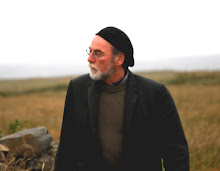Two Houses Half-Buried In Sand: Some Hul'qumi'num Stories From Hereabouts
 Back in 1927, Beryl Mildred Cryer, a young writer from the well-established English settler community at Chemainus, on Vancouver Island, set out to introduce the world to the grand storytelling traditions of the local Hul’qumi’num people.
Back in 1927, Beryl Mildred Cryer, a young writer from the well-established English settler community at Chemainus, on Vancouver Island, set out to introduce the world to the grand storytelling traditions of the local Hul’qumi’num people.Cryer found many accomplices among the aboriginal people of the Cowichan Valley and the adjacent coast. Between 1929 and 1935, she produced more than 60 articles for the Victoria Daily Colonist’s Sunday magazine.
The result was a treasure trove of Hul’qumi’num narrative literature, told mainly in the voices of women—a rare thing in Coast Salish ethnography—and told also in an everyday language, the kind that anthropologists so rarely use.
It was also mainly an unlikely collaboration between Cryer, a down-at-heels high-society type, and Mary Rice, a high-born Penelakut woman from a long line of chiefs and warriors. Rice had lost her “Indian status” by marrying an Irish-Squinomish man, and Cryer was scraping up freelance work in the depths of the Depression. When they met, Rice was a widow, the town washerwoman, living in a shack on the beach near the Chemainus wharf.
It's edited by Chris Arnett, and published by Talonbooks. My wee review of the book is here.





2 Comments:
Heck ya, I'll be checking this one out.
Thanks for the re:vue.
I very nearly picked this one up at Bolen's the other day (week?) - it goes up a few spots on my desire gradient now.
Post a Comment
<< Home